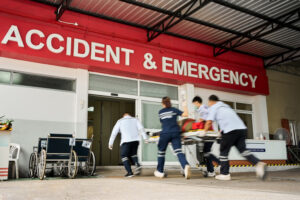The incidence of trauma-induced coagulopathy (TIC) is related to the severity of injury and occurs in about 25% of trauma patients. The etiology of TIC is complex and multifaceted, creating uncertainty about treatment. In Europe, fibrinogen (FC) and prothrombin complex concentrates (PCC) are the standard of care for the initial resuscitation of severe trauma patients, whereas trauma centers in North America mainly use plasma. To compare these two approaches, researchers at six trauma centers in Canada randomized 216 patients (median age, 38; 81% male; median Injury Severity Score, 29). Massive hemorrhage protocols (MHP) were activated in 137 patients and were included in the primary analysis. Sixty-six of the trauma patients received FC (4g) and PCC (2000 IU) and 71 patients received four units of plasma in the first two massive hemorrhage protocol packs in addition to RBCs and platelets. No difference in the mean number of RBC units transfused were observed between arms in the 24-hours after randomization—20.8 (95% C.I., 16.7 to 25.9) and 23.8 (95% C.I., 19.2 to 29.4) in the FC/PCC and plasma arms, respectively. Likewise, no differences in 24-hour or 28-day mortality nor thromboembolic events were observed between arms. Future research is needed to enable early prediction of TIC and MHP activation as timing is critical for severe trauma patients.
Reference:

